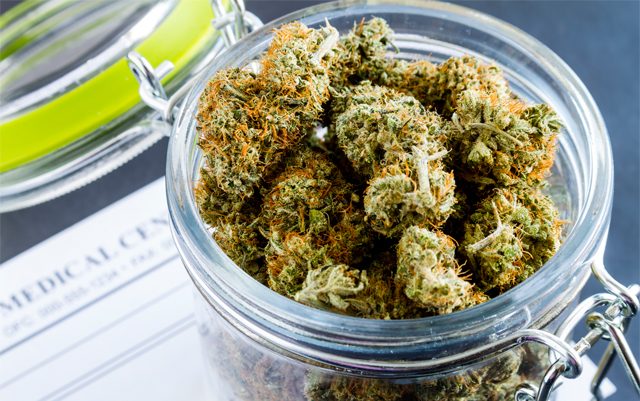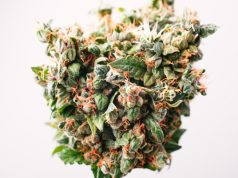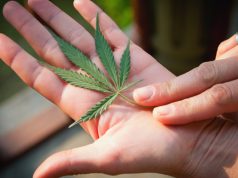Urinary incontinence is more than just an inconvenience, as the sufferer has to go to the bathroom over and over again due to constant and sudden urges, irrespective of time and place. Unfortunately, these symptoms always accompany social embarrassment and mental anxiety and one has to bear it until the bladder symptoms are completely treated.
We’re not far away from the day that we can treat these symptoms by ourselves; a ray of hope comes from a new study that reported significant treatment benefits from cannabis for urinary incontinence.
Pathophysiology of urinary incontinence
Urinary incontinence is characterized by loss of bladder control as a result of weak bladder muscles and inflammation, which may be due in part damaged nerves that control the bladder functions. In the U.S, more than one in ten elderly individuals, mostly women, suffer with urinary incontinence.
We are well aware of the brain’s complex role in the signal processing involved in bladder storage, control and urine voiding processes. These mechanisms are also directly facilitated by the sacral segments of the spinal cord that regulate the parasympathetic innervation of the detrusor, maintenance of detrusor pressure and urinary sphincter muscle control. In certain neurological disorders, the coordinated activity between the detrusor and the sphincter may get damaged, resulting in deregulation of urinary sphincter contraction during the detrusor contractions. These events are responsible for increased urinary frequency, urgency and incontinence.
In neurological disorders, including multiple sclerosis, patients may suffer progressively worsening bladder dysfunction due to impaired spinal cord functions. These patients may also suffer other complications including incomplete bladder emptying, recurrent urinary tract infections and psychological morbidities.
Mechanism of action of cannabis on incontinence
The benefits of the currently available treatments are not up to par, and also cause niggling side effects, resulting in poor treatment adherence. As urinary incontinence is a neurogenic disorder, researchers are now looking into the rationality of cannabinoid use for incontinence treatment and promising evidence is emerging.
As with other organs, the presence of cannabinoid receptors in the urinary bladder has been confirmed by research studies. Compared to CB1 receptors, the distribution of CB2 receptors are limited. Cannabinoids work peripherally, as well as centrally, on detrusor smooth muscles, and hence it might be helpful to treat neurogenic — and also non-neurogenic — bladder problems.
Studies have shown that cannabis extracts have direct inhibitory effects on detrusor contractions and also on various sites of the nervous system that control the smooth muscle contractions of urination.
Additionally, cannabis extracts interact with the cholinergic receptor system and the mechanism of action mimics the mechanism of action of conventional therapeutic drugs. Maybe this benefit could synergize the action of anti-cholinergic drugs that are indicated for urinary incontinence.
Researchers believe the improvements in urinary urgency without increased urinary volumes might be due to the direct action of cannabis on the suburothelial mechanosensory apparatus. These benefits are not evident in conventional therapeutic drugs, which is noteworthy.
Studies have demonstrated increased levels of vanilloid receptors (TRPV1) in the sub-urothelium of overactive bladder patients. Anandamide has remarkable agonist activity on this receptor and may have treatment potential for this problem. One experimental study reported that injection of anandamide into the spinal cord has attenuated spinal cord inflammation related bladder over-activity. These results could be extrapolated in humans also.
The presence of cannabinoid receptors were reported in the pons and other regions of the brain, which control the urination process.
So, we have concrete evidence to believe that cannabis could act on these receptors and treat overactive bladder and urinary incontinence.
Research evidence
One experimental study suggests that cannabis compounds can reduce bladder inflammation and symptoms of overactive bladder in laboratory animals. Based on similar studies, several studies are being conducted in humans, and the results are encouraging.
Within ten years of onset, roughly 90% of multiple sclerosis patients develop urinary tract infections that often lead to urinary urgency and incontinence with poor quality of life. In such cases, catheterization and various treatments are used to control these symptoms. Some MS patients self-treat themselves with cannabis to relieve the symptoms. A survey study involving 112 MS patients inquired about the benefits of cannabis (self-treatment) on their urinary symptoms. The respondents reported 64 percent, 55 percent and 59 percent improvements in urinary urgency, incontinence and micturition problems, respectively.
Recently, one study concluded that cannabis extracts have improved neurogenic bladder symptoms in MS patients.
Experts believe that cannabis could be useful for the treatment of urinary incontinence with localized, as well as central nervous system, problems that are associated with urination and bladder control.
These studies have shown consistence with the experimental studies and confirmed the existence of cannabinoid receptors in the target organs, which could be a potential drug target for urinary incontinence.
A study published in the journal Clinical Rehabilitation reported that whole-plant cannabinoid extracts improved bladder control and urinary frequency in MS and spinal cord injury patients. The double-blind, randomized, placebo-controlled study involved MS, spinal cord injury and other patients. The patients were assigned to take whole-plant extracts of THC and CBD, with a 1:1 concentration of CBD:THC as sublingual spray (at-home). The patients were allowed to gradually increase the dosage up to four weeks. The clinical benefits, such as improved bladder control and related symptoms, were comparatively more significant than placebo group patients.
The results of the study demonstrated clinically significant reduction in urinary urgency, the number of incontinence episodes, frequency and nocturia. Additionally, the daily voided urine level, incontinence or urge,and urinary pad weight were remarkably decreased. Unexpectedly, other non-urinary symptoms — such as spasticity, pain and quality of life — were also improved.
Most of the patients achieved treatment response and symptom control before they reached the average dose of treatment. There was a slight variation in the daily dose between the patients, however, no signs of tolerance were observed and efficacy was maintained at the optimal dose. Additionally, improved neurogenic symptoms were also observed in patients who were unresponsive to conventional therapies. Most of the adverse events were temporary and well tolerated.
In the study, the patients enjoyed flexible but precise dose adjustment, as they were allowed to choose the sublingual route, which has a favorable pharmacokinetic profile. The study subjects were encouraged to take the maximum tolerated dose to check the psychoactive events, such as hallucinations. However, such events were reported to be low. Occurrence of dry mouth was the most common adverse event.
Based on these findings, some experts have recommended the use of cannabinoids as potential ‘second-line’ agents for treating incontinence. Considering the available evidence, marijuana’s therapeutic benefit on urinary incontinence is apparent, and it can be employed as a ‘first-line’ therapeutic option.
In a large, randomized, placebo-controlled clinical trial that enrolled 630 MS patients who suffered urinary incontinence, THC alone or cannabis extract was assigned to the treatment group to treat urinary incontinence episodes. When compared to the placebo group, both the THC and cannabis extracts treated groups demonstrated clinically and statistically significant treatment benefits on incontinence episodes.
Flush out urinary incontinence
Altogether, it is apparent that functional cannabinoid receptors are present in the urinary bladder, which can be therapeutically exploited to treat bladder symptoms.
This evidence has reassured the safety of cannabinoid-based treatments devoid of psychoactive side effects, which can be avoided by localized delivery into the bladder via intravesicular route. As research progresses, these types of novel, targeted routes of administration could be a reality and it would be helpful to eliminate the side effects of medical marijuana.
Until then, we can rely on conventional routes of administration, which are still way better than invasive surgeries and costly pills that we can barely tolerate.







I notice a great improvement in my overactive bladder symptoms with marijuana use or just CBD use. I even have an Interstim Implant and the Marijuana helps with urgency more than the implant does!
Really great to hear cannabis works for your OAB. Yes, it’s effective than conventional therapeutic options! Thanks for your experience.
How about increased urinary urgency with cannibis withdrawal? Is it recognised symptom?
I noticed a wonderful change in my over active bladder for about two months. My daughter called me today and wants to take me to see Hamilton and I was telling her how great it was. As soon as I hung up the phone my bladder started overacting again. I’m hoping this is temporary. I want to be able to sit through Hamilton. I’m so bummed.